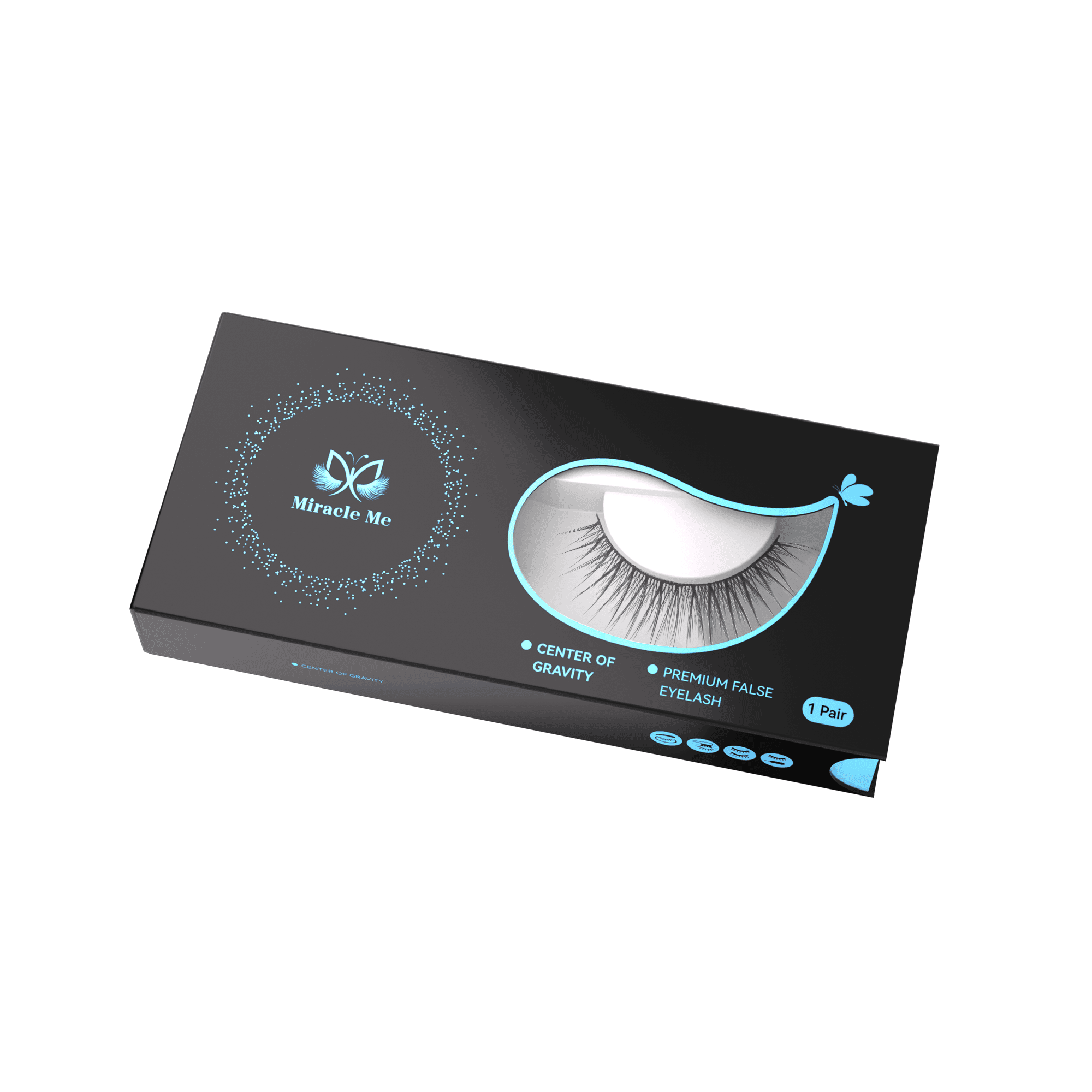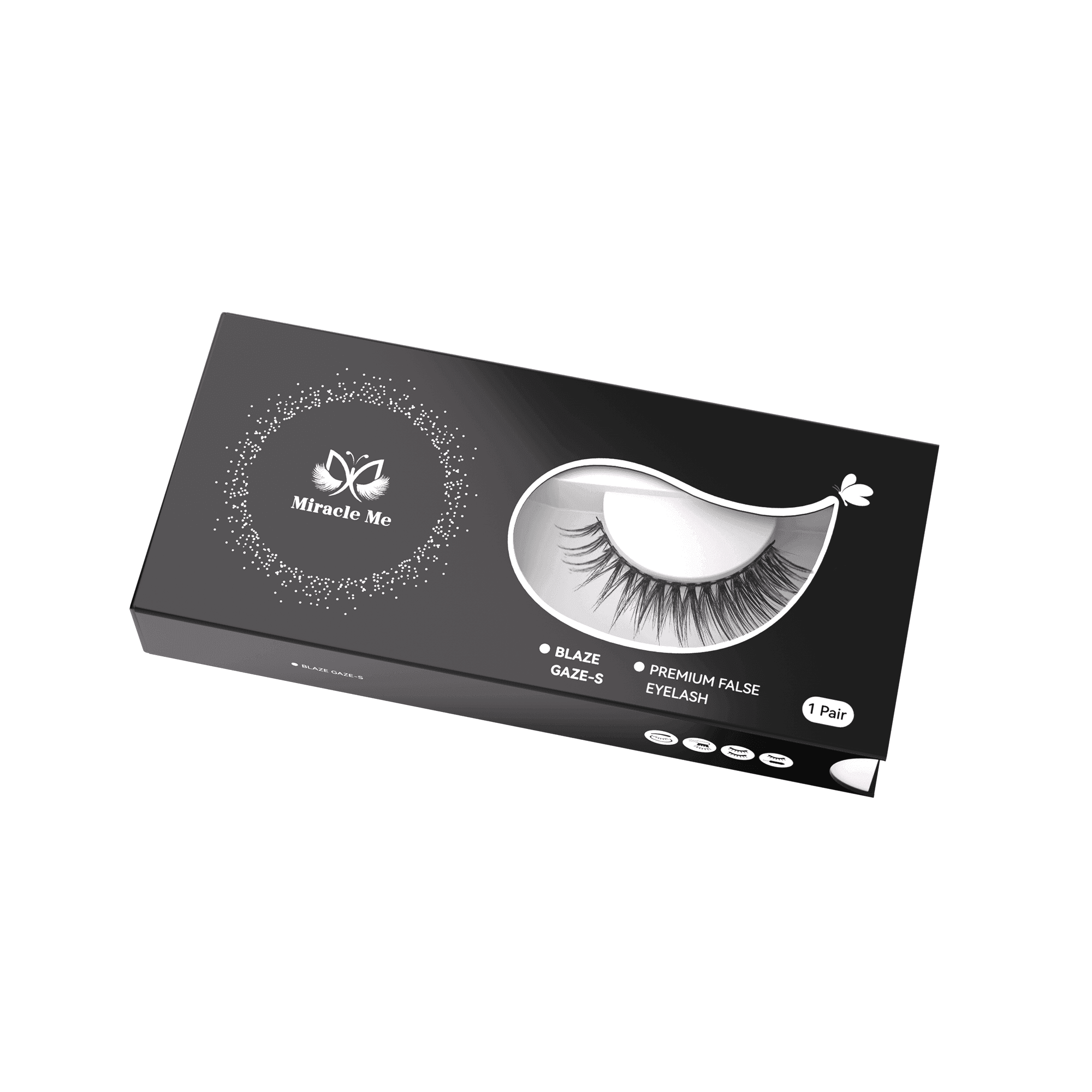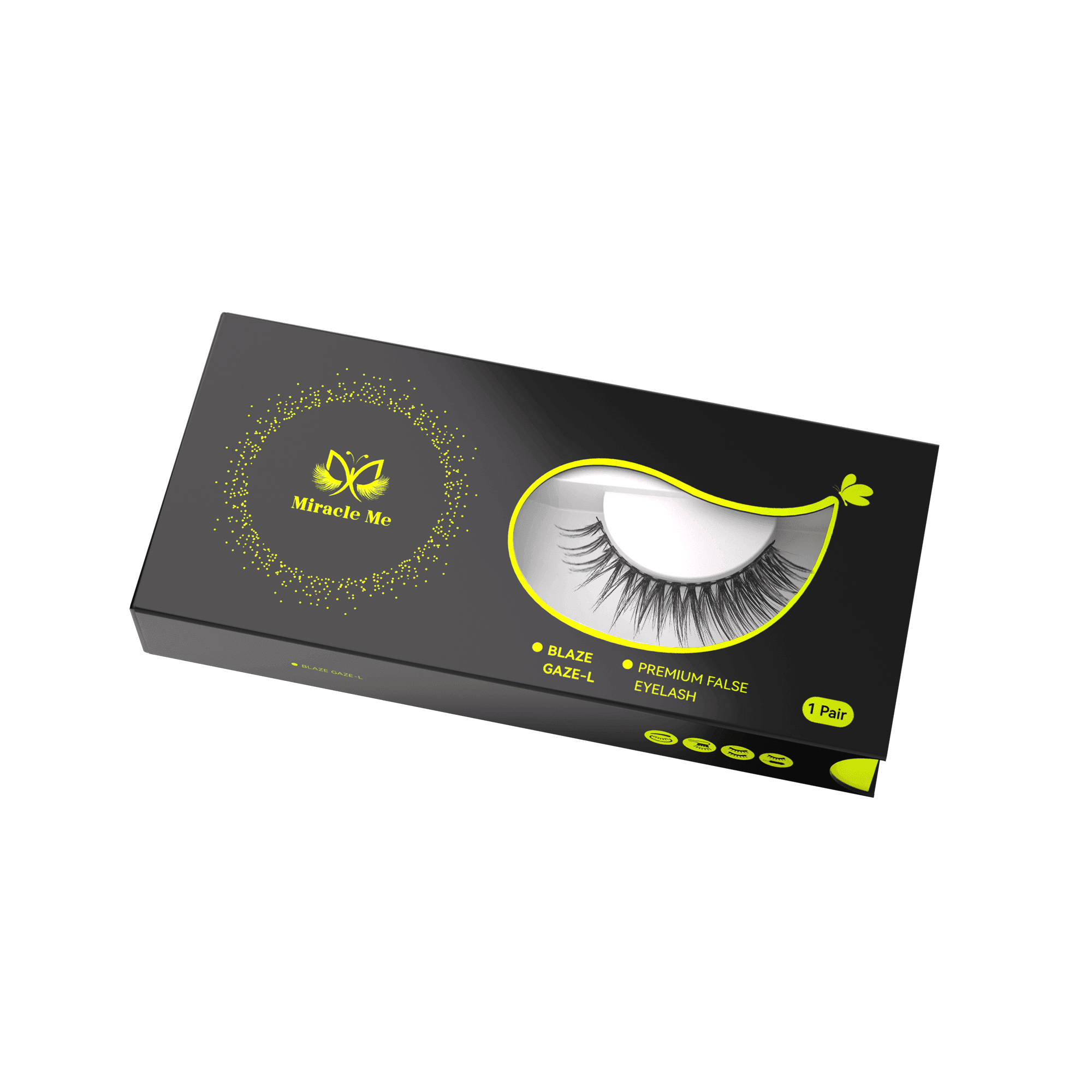Navigating Tariff-Driven Disruptions in the Eyelash Industry
Image Source: pexels
The eyelash industry in 2025 encounters notable challenges due to increasing tariffs on imports. For example, Tariffs on lashes from China, can soar up to 104%, while the current rate is already at 17.5%. Additionally, countries like Vietnam and Mexico face tariffs as high as 46%, further complicating cross-border trade for false eyelashes. These policies elevate costs and pose obstacles for brands like Lilac St., which depend on international supply chains. Adapting to these disruptions requires reimagining sourcing strategies and embedding resilience into operations.
Key Takeaways
- Taxes on false eyelashes from China are now as high as 104%. This makes products more expensive and harder to get for companies.
- Having many suppliers is very important. Depending on just one supplier can cause big problems when taxes change.
- Use technology to make shipping easier. Tools like AI can track tax changes and help avoid delays in deliveries.
- Teach your team about rules and updates. When workers know the latest information, they make fewer mistakes.
- Look at trading with other countries. Finding places with better rules can lower costs and help your business grow.
The 2025 Tariff Landscape
Key policies impacting false eyelashes
In 2025, tariffs on false eyelashes have reached unprecedented levels, reshaping the global beauty market. Policies targeting Chinese imports, where many false eyelashes are manufactured, have imposed tariffs as high as 104%. These measures aim to reduce dependency on Chinese goods, but they have created ripple effects across the industry. Countries like Vietnam and Mexico, which serve as alternative production hubs, also face tariffs of up to 46%. This broad application of trade restrictions has left businesses grappling with higher costs and disrupted supply chains.
The impact extends beyond pricing. Tariffs influence trade flows, with contraction rates ranging from 5.5% to 8.5%. A closer look at trade flow data reveals that sectors like transport and electrical equipment experience significant declines, while Chinese exports shift toward the Euro area, increasing by 9%. For the eyelash industry, these shifts mean fewer options for sourcing materials and higher competition for alternative suppliers.
Tariff Mexico false eyelashes: Cross-border implications
Mexico has emerged as a key player in the false eyelash market, offering proximity to the U.S. and competitive labor costs. However, tariffs on Mexican goods have introduced new challenges. For businesses importing false eyelashes from Mexico, the effective tariff rate can reach 46%, significantly increasing the cost of goods. This has forced companies to reconsider their reliance on Mexican suppliers.
Cross-border trade disruptions also lead to logistical delays. Customs inspections and compliance requirements slow down shipments, making it harder for brands to meet consumer demand. For smaller businesses, these challenges can be particularly daunting, as they often lack the resources to absorb additional costs or navigate complex regulations.
Economic drivers of tariff changes
Economic factors play a crucial role in shaping tariff policies. In 2025, the U.S. faces a projected reduction in GDP growth, with some experts warning of a potential recession. Tariff escalation contributes to this slowdown by increasing production costs and reducing consumer spending power. The inflation rate, driven by higher import costs, is expected to rise to 4.5%, further straining household budgets.
The economic pressure creates a challenging environment for the eyelash industry. Higher tariffs not only increase the cost of raw materials but also limit access to affordable alternatives. Businesses must navigate these complexities while maintaining competitive pricing and quality standards.
Supply Chain Challenges for False Eyelashes
Image Source: unsplash
Rising costs and price volatility
The eyelash industry faces significant cost increases in 2025. Tariffs on imported materials, such as ultra-thin plastic fibers and silk, have driven up production expenses. These rising costs directly impact the price of false eyelashes, making it harder for businesses to maintain competitive pricing. You may notice that premium lashes, like silk or mink, now come with a wider price range due to quality variations and ethical sourcing practices.
| Material Type | Price Range (per pair) | Notes |
| Premium Silk Lashes | $5 - $30 | Price varies based on quality |
| Mink Lashes | Starting price varies | Reflects ethical sourcing of fur |
| Mass-market Lashes | $2 - $10 | Targeted at cost-sensitive consumers |
Price volatility also creates uncertainty for businesses. Suppliers often adjust prices to offset tariff-related costs, leaving you with fluctuating expenses. For smaller brands, this unpredictability can strain budgets and limit growth opportunities.
Sourcing limitations and supplier dependencies
Tariffs have forced many businesses to rethink their sourcing strategies. If you depend heavily on a single supplier or region, you may face challenges when tariffs disrupt trade. For instance, China, a major producer of false eyelashes, now faces tariffs as high as 104%. This has made sourcing from China more expensive and less reliable.
Diversifying your supplier network can help mitigate these risks. However, finding alternative suppliers in regions like Vietnam or Mexico comes with its own challenges. Higher tariffs and logistical hurdles in these countries can offset the benefits of diversification. You may also encounter quality inconsistencies when switching suppliers, which can impact customer satisfaction.
Challenges for small businesses in the eyelash industry
Small businesses in the eyelash industry face unique hurdles when navigating the tariff-driven disruptions of 2025. Unlike larger companies, you may lack the financial resources and operational flexibility to absorb sudden cost increases or adapt to supply chain challenges. These obstacles can significantly impact your ability to compete and grow in a rapidly changing market.
Limited Financial Resources
Tariffs often lead to higher costs for raw materials and finished products. As a small business owner, you may find it difficult to absorb these expenses without passing them on to your customers. This can make your products less competitive, especially when larger brands have the ability to negotiate better deals with suppliers or offset costs through economies of scale.
Tip: Consider exploring bulk purchasing or forming cooperatives with other small businesses to negotiate better pricing from suppliers.
Dependence on Single Suppliers
Many small businesses rely heavily on a single supplier or region for their materials. This dependency becomes a significant risk when tariffs disrupt trade. For example, if your lashes are sourced from China, the 104% tariff rate could make your products prohibitively expensive. Finding alternative suppliers in countries like Vietnam or Mexico might seem like a solution, but these regions also face tariffs and logistical challenges.
Key Risks of Supplier Dependency:
- Price volatility due to tariff fluctuations.
- Delays in receiving materials, impacting production schedules.
- Quality inconsistencies when switching to new suppliers.
Limited Access to Logistics Solutions
Shipping delays caused by customs inspections and compliance requirements can disproportionately affect smaller businesses. You may not have the resources to invest in advanced logistics solutions or expedited shipping options. This can result in longer lead times, reduced inventory levels, and missed opportunities to meet customer demand.
Note: Partnering with third-party logistics providers can help streamline your shipping processes and reduce delays.
Difficulty Competing on Price
Larger brands often have the advantage on scale, allowing them to keep prices competitive even during tariff hikes. As a small business, you may struggle to match these prices without compromising on quality. This can make it challenging to retain customers who are sensitive to price changes.
Regulatory and Compliance Challenges
Navigating the complex web of tariff regulations and compliance requirements can be overwhelming. You may lack the in-house expertise to handle these issues, leading to potential delays or penalties. Staying informed about policy changes and ensuring compliance is crucial but can be time-consuming and costly.
Advice: Invest in training for your team or consult with trade experts to stay ahead of regulatory changes.
Balancing Quality and Affordability
Maintaining the quality of your products while keeping them affordable is a constant challenge. Tariffs increase the cost of high-quality materials, forcing you to make tough decisions about pricing and product offerings. Compromising on quality can harm your brand reputation, while raising prices may alienate your customer base.
Strategies to Consider:
- Introduce tiered pricing with different product lines to cater to various customer segments.
- Focus on marketing the unique value of your products to justify higher prices.
Small businesses like yours play a vital role in the eyelash industry, but navigating these challenges requires strategic planning and adaptability. By diversifying suppliers, optimizing logistics, and staying informed about regulatory changes, you can build resilience and position your business for long-term success.
Strategic Solutions for Overcoming Tariff Challenges
Image Source: pexels
Diversifying supplier networks
Relying on a single supplier or region for materials can leave your business vulnerable to tariff hikes and supply chain disruptions. Diversifying your supplier network reduces the risk and ensures a stable flow of materials. By sourcing from multiple regions, you can mitigate the impact of tariffs and maintain consistent production levels.
- A Gartner survey revealed that 57% of industrial manufacturers with operations in China are adopting the "supplier + 1" strategy. This approach involves adding at least one alternative supplier to reduce dependency on a single source.
- Many companies are also implementing a dual sourcing strategy. This strategy enhances resilience by spreading risks across multiple suppliers.
For example, if you currently source false eyelashes from China, consider exploring suppliers in Vietnam or India. While tariffs in these regions still apply, diversifying your network can help you avoid complete reliance on one country. This approach also allows you to negotiate better deals and maintain flexibility in your supply chain.
Leveraging technology for logistics optimization
Technology plays a crucial role in overcoming logistical challenges caused by tariffs. Advanced tools can help you streamline operations, reduce delays, and minimize costs.
| Strategy | Description |
| Artificial Intelligence (AI) | AI tools monitor trade policies and model the impact of regulatory changes. |
| Digital Twins | Virtual simulations of supply chains test scenarios and optimize processes before implementation. |
| Integrated Enterprise Analytics | Centralized data platforms highlight anomalies and enable seamless execution of updated plans. |
For instance, using AI to track tariff changes can help you anticipate cost increases and adjust your logistics strategy accordingly. Digital twins allow you to simulate different supply chain scenarios, enabling you to identify the most efficient routes and minimize delays.
Apple serves as a prime example of leveraging technology and diversification. The company expanded its production to Vietnam and India to reduce its reliance on China. By adopting similar strategies, you can optimize your logistics and adapt to changing trade environments.
Adapting manufacturing processes to reduce costs
Adjusting your manufacturing processes can help offset the financial burden of tariffs. One effective strategy involves modifying product designs to fall under different tariff classifications. Known as tariff engineering, this approach can significantly lower your duty rates.
Collaborating with suppliers to share the burden of increased costs is another practical solution. Negotiating bulk discounts or exploring cost-sharing agreements can make your operations more sustainable. Additionally, investing in automation can reduce labor costs and improve efficiency.
For businesses importing false eyelashes, such as those affected by tariff mexico false eyelashes policies, adapting manufacturing processes becomes even more critical. By exploring alternative materials or production techniques, you can maintain quality while minimizing expenses.
Tip: Consider conducting a cost-benefit analysis before implementing changes to ensure they align with your long-term goals.
Exploring alternative trade agreements and markets
Exploring alternative trade agreements and entering new markets can help your business reduce the impact of tariffs. By identifying regions with favorable trade policies and untapped potential, you can diversify your revenue streams and strengthen your supply chain. This approach not only mitigates risks but also positions your brand for long-term growth.
Identifying Attractive Markets
Start by conducting a detailed market analysis. Evaluate factors such as market size, growth potential, local competition, and profitability per unit. This research helps you identify regions where your products can thrive. For example, countries with growing beauty industries and lower tariff rates may offer lucrative opportunities for your false eyelashes.
| Strategy | Description |
| Market Analysis | Assess growth, size, local competition, and profitability to find new regions. |
| Strengthen Partnerships | Collaborate with local distributors and suppliers to navigate regulations. |
| Geographical Expansion | Enter new markets or enhance your presence in existing ones with high potential. |
Strengthening Local Partnerships
Building strong relationships with local distributors and suppliers is essential when entering new markets. These partnerships help you navigate regulatory challenges and establish a cost-effective presence. Local partners often have valuable insights into consumer preferences and market trends, enabling you to tailor your products and marketing strategies effectively.
Tip: Partnering with distributors who understand the local market can streamline your entry process and reduce operational risks.
Leveraging Trade Agreements
Trade agreements between countries can significantly reduce tariff rates and simplify cross-border trade. Research agreements that your target markets have with other nations. For instance, if you source materials from South Korea, explore trade agreements that lower import duties on South Korean goods. This strategy can help you maintain competitive pricing while ensuring product quality.
Expanding Geographically
Geographical expansion allows you to tap into new customer bases and reduce dependency on a single market. Focus on regions with strong growth potential in the beauty industry. For example, Southeast Asia and the Middle East have seen rising demand for beauty products, including false eyelashes. Expanding into these markets can offset losses from tariff-affected regions.
Note: Before expanding, ensure your supply chain can support increased demand without compromising efficiency.
By exploring alternative trade agreements and markets, you can build a more resilient business. This strategy not only reduces your exposure to tariffs but also opens up new opportunities for growth and innovation.
Actionable Steps for Resilience
Strengthening supplier and logistics partnerships
Building strong relationships with suppliers and logistics providers can help you navigate tariff disruptions effectively. Relying on a single supplier increases vulnerability to trade restrictions. Diversifying your supplier base across multiple regions reduces risks and enhances flexibility. Strengthening partnerships with logistics providers ensures alignment on priorities during challenging times.
| Benefit | Description |
| Rapid deployment for real-time response | Intelligent supply chain management solutions help you pivot sourcing strategies and reroute shipments immediately when disruptions occur. |
| Seamless adaptability | You can reconfigure processes and integrate new suppliers in response to economic shifts. |
| Real-time supply chain visibility | A centralized source of information provides transparency into inventory and logistics, enabling coordinated actions. |
| Reduced errors and increased agility | Improved communication between teams and suppliers reduces disruptions and enhances execution. |
To foster resilience, consider these steps:
-
Collaborate with suppliers to maintain open communication.
- Strengthen partnerships to align priorities and mitigate risks.
Expanding supplier capabilities through deeper partnerships can also improve operational efficiency. Joint ventures with suppliers allow you to share risks and resources, fostering innovation and adaptability.
Conducting market research to anticipate trends
Market research helps you stay ahead of tariff-induced disruptions. By analyzing emerging trends, you can adapt your strategies to meet changing consumer demands and market conditions. For example, tariffs often lead to shifts in consumer behavior and business operations, creating opportunities for innovation.
| Source | Insight |
| Tariffs: A New Economic Shift and How US Businesses Must Think Beyond Survival | Tariffs can significantly change consumer behavior and business operations in the US market. |
| Navigating Tariff Disruption in the UK: Uncertainty Fuels Innovation Opportunities | Tariff disruptions create opportunities for innovation. |
| Trump Tariffs: How Brands Can Navigate the Fallout | The announcement of tariffs led to market volatility and required businesses to adapt quickly. |
| This Is Insane: Beauty Brands Scramble To Assess Tariff Impacts And Mitigation Strategies | Tariffs threaten prices and the entrepreneurial spirit, prompting businesses to adapt and protect jobs. |
Use these insights to identify growth opportunities and adjust your product offerings. Collaborating with local distributors can also provide valuable market intelligence.
Developing contingency plans for tariff disruptions
Preparing contingency plans ensures your business remains resilient during tariff disruptions. Start by identifying key cost drivers and fostering collaborative relationships with suppliers. For instance, a U.S.-based manufacturing firm successfully renegotiated contracts by creating flexible pricing models that adjusted based on tariff fluctuations.
Transparent discussions with stakeholders can also lead to mutually beneficial agreements. A global electronics company faced rising tariffs and initiated open communication with its partners. This approach resulted in shared responsibility for tariff costs, reducing the financial burden on both parties.
To develop an effective plan, focus on:
- Diversifying your supplier network to reduce dependency.
- Establishing flexible contracts that adapt to tariff changes.
- Building strong relationships with stakeholders to share risks.
By implementing these strategies, you can safeguard your operations and maintain stability in a volatile trade environment.
Educating teams on compliance and regulatory updates
Educating your team on compliance and regulatory updates is essential for navigating tariff-driven disruptions. Regulatory changes can occur rapidly, creating risks for businesses that fail to adapt. Keeping your team informed ensures your operations remain compliant and reduces the likelihood of costly penalties.
Regular compliance training helps your staff understand the latest trade policies and tariff classifications. For example, investing in training programs aligns your organization with regulatory expectations. This proactive approach minimizes errors and strengthens your ability to respond to shifting trade environments.
Compliance risk assessments should be updated frequently. Political and regulatory changes can lead to "regulatory whiplash," where sudden shifts in policies create confusion. By conducting regular assessments, you can identify vulnerabilities and implement corrective measures before they escalate into major issues. Training your team to use compliance software ensures they stay informed about regulatory changes and apply this knowledge effectively.
Tip: Consider integrating compliance updates into your regular team meetings or creating a centralized platform for sharing regulatory news. This keeps everyone aligned and reduces the risk of miscommunication.
By prioritizing education and leveraging technology, you empower your team to navigate the complexities of tariffs confidently. A well-informed workforce strengthens your business’s resilience and positions you for long-term success in a challenging trade environment.
The eyelash industry in 2025 faces significant hurdles due to escalating tariffs. These trade policies have driven up costs, disrupted supply chains, and created sourcing challenges. Despite these obstacles, the market shows resilience, with an expected growth from USD 1.65 billion in 2023 to USD 2.65 billion by 2030, at a CAGR of 6.95%.
| Metric | Value |
| Market Growth (2022-2027) | USD 569.8 million |
| Current Market Worth (2023) | USD 1.65 billion |
| Expected Market Worth (2030) | USD 2.65 billion |
| CAGR (2024-2030) | 6.95% |
To thrive in this evolving landscape, you must adopt proactive strategies. Diversifying suppliers, leveraging technology, and conducting cost-benefit analyses can help you mitigate risks. Tools like tariff calculators and predictive analytics enable smarter decision-making.
Looking ahead, staying informed about trade regulations and embracing innovation will be key. By preparing for future disruptions, you can position your business for sustainable growth in a competitive market.
FAQs
What are tariffs, and how do they affect the eyelash industry?
Tariffs are taxes on imported goods. They increase costs for materials and finished products, making it harder for businesses to maintain competitive pricing. You may face higher expenses and supply chain disruptions due to these trade policies.
How can you diversify your supplier network effectively?
Start by researching suppliers in multiple regions. Focus on countries with lower tariffs and reliable production standards. Building relationships with alternative suppliers ensures flexibility and reduces dependency on one source.
What tools can help you manage tariff-related logistics challenges?
Use AI-powered platforms to monitor trade policies and optimize shipping routes. Digital twins simulate supply chain scenarios, helping you identify efficient solutions. These tools minimize delays and improve operational efficiency.
How do you prepare your team for regulatory changes?
Invest in compliance training programs. Educate your team about tariff classifications and trade policies. Use software that provides real-time updates to ensure your operations stay aligned with regulations.
Can small businesses compete despite tariff challenges?
Yes, by adopting strategies like bulk purchasing, supplier diversification, and cost-sharing agreements. Focus on marketing your product’s unique value to justify pricing. Collaborate with logistics providers to streamline operations and reduce delays.











